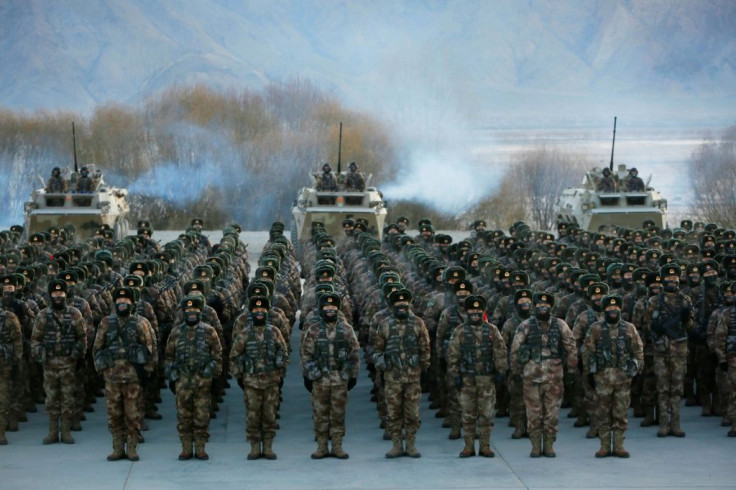China Tested New Nuclear Hypersonic Missile In August, Took US By Surprise: Report
KEY POINTS
- The missile reportedly missed its target by about 24 miles
- But it displayed China's great progress on hypersonic weapons
- Experts said the new weapon could fly over the South Pole
Taking the U.S by surprise, China tested a nuclear-capable hypersonic missile that circled the globe before speeding toward its target.
The rocket carrying a hypersonic glide vehicle was launched by the Chinese military in August, reported Financial Times, quoting unnamed sources.
Though the missile reportedly missed its target by about 24 miles, it displayed the great leap China made on hypersonic weapons. The test that demonstrated the country's advanced space capability has reportedly stunned the U.S. intelligence, as it was "far more advanced than U.S. officials realized."
The report said several countries, including the U.S., are developing hypersonic weapons that can fly at five times the speed of sound, but slower than a ballistic missile. These weapons are launched into space on a rocket but orbit the earth under their momentum. They are tough to intercept and manoeuvrable, making them harder to track.
Taylor Fravel, an expert on Chinese nuclear weapons policy who was unaware of the test, told Financial Times that "a hypersonic glide vehicle armed with a nuclear warhead could help China negate U.S. missile defence systems, which are designed to destroy incoming ballistic missiles."
According to Fravel, it would be "destabilising" if China fully developed and deployed such a weapon, but added that a test did not necessarily mean that Beijing would deploy it.
Financial Times also quoted two unnamed sources familiar with the test, who claimed the weapon could "fly over the South Pole." This would pose a challenge for the U.S. military because "its missiles defence systems are focused on the northern polar route."
Though the Pentagon did not comment on the report, spokesperson John Kirby expressed concern. "We have made clear our concerns about the military capabilities China continues to pursue, capabilities that only increase tensions in the region and beyond," Kirby told Financial Times. "That is one reason why we hold China as our number-one pacing challenge."
The test comes as General Glen VanHerck, head of North American Aerospace Defense Command, told a conference in August that China had "recently demonstrated very advanced hypersonic glide vehicle capabilities."
He added that the Chinese capability would "provide significant challenges to my Norad capability to provide threat warning and attack assessment."
Though the Chinese military generally announces the launch of Long March rockets, the type used to launch the hypersonic glide vehicle into orbit, it concealed details about the one in August, the report said.
The Chinese embassy has not commented on the test, but its spokesperson Liu Pengyu said China's military policy was always "defensive in nature." "We don’t have a global strategy and plans of military operations like the U.S. does. And we are not at all interested in having an arms race with other countries," the report quoted Liu.
Meanwhile, a report by Chinese-state-backed media Global Times said the U.S. was constantly releasing rumors that China is strengthening its nuclear strategic tools "to pave the way for public opinion in the U.S. to further increase its military expenditure from a high starting point."

© Copyright IBTimes 2024. All rights reserved.





















